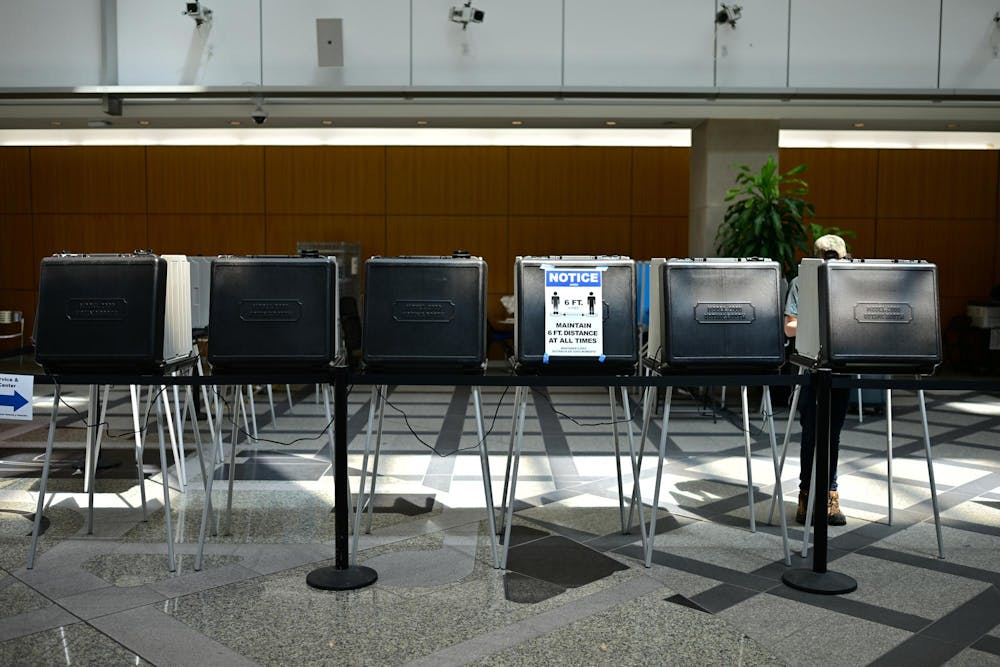Editor's note: All opinions, columns and letters reflect the views of the individual writer and not necessarily those of the IDS or its staffers.
The election is right around the corner, which means polls are coming out of the woodwork at rapid speed. There are the “mainstream” polls from outlets like CNN, the New York Times, and the Washington Post, but there are also independent pollsters separate from large media corporations, and some polls that just seem made up. This is why it’s essential to look at the bigger picture when it comes to polls — who paid for the survey, how it might’ve gotten the results it did and several other factors.
One of the first things to look for before anything else is whether the poll is skewed. You can look at the cross-tabs of a poll to see if anything is fishy. If there are no cross-tabs on the polls website that may be another sign not everything is transparent. All you have to do is look back at the 2022 midterm elections to see how partisan polls flooded the zone to give the illusion of a so-called “red wave."
According to the New York Times, traditional non-partisan polls mostly fixed some of the polling errors such as undercounting Republican support from previous election cycles. Still, they also produced fewer polls, creating a polling vacuum filled by a sudden influx of partisan Republican polls trying to paint a narrative.
For example, the Trafalgar polling group incorrectly suggested that Republican candidates such as Mehmet Oz, Herschel Walker and Kari Lake would win their election. In fact, these races weren’t particularly close.
Next, you need to be aware of the background of each pollster. Some Republican GOP-leaning polls include Patriot Polling, Trafalgar, and Rassmussen. Rassmussen has been under fire recently for secretly showing the Trump campaign polling results before they came out publicly. This is highly frowned upon, for what their X account profile says is an “independent” pollster. If true the collaboration could lead to legal issues, as Rassmussen tends to portray itself as independent and non-partisan.
This isn’t just GOP-specific, though. There are also Democrat-aligned pollsters, though they seem less likely to release results because I rarely see them. One that I’d look out for, though, is Big Village polling which seems to overestimate Democrats support compared to others.
You must be careful when looking at the findings, even with reputable pollsters. There are many reasons polls might show inaccurate or misleading results. Maybe they sampled the electorate incorrectly, didn’t cross-tabulate the polls well, or the sample size was too big or small. These are all reasons why a poll may be off, which is why polls have a margin of error.
Plus or minus three is considered a typical margin of error.
Pew Research describes the margin of error as follows: “A margin of error of plus or minus 3 percentage points at the 95% confidence level means that if we fielded the same survey 100 times, we would expect the result to be within 3 percentage points of the true population value 95 of those times.” Even a five-point lead nationally can be considered a close race, though it may not seem that way to the public.
Christopher Desante is an IU political science professor who specializes in American politics, race and racism in America, media framing, climate change and statistical methods. For him, a poll has to show a real blowout to feel safe.
“In my own personal opinion, unless one candidate is leading by more than 8-10% in several independent polls, I would say the race is too close to call,” Desante said.
Another issue that has plagued all pollsters in the past two presidential elections is nonresponse bias. For example, in 2016, polls significantly under-polled white voters without a college degree, which is one of Donald Trump’s largest demographics of support.
Though pollsters believed they had fixed this in 2020, they were wrong. The “shy” Trump voter effect was in full swing and showed up in polls. According to CloudResearch, 12% of Republicans didn’t feel comfortable saying their true voting intention in phone polls, compared to 5% of Democrats saying the same. However, in the 2022 midterms, solid polls underestimated Democrats a little, so polling errors can, and do, go wrong in both directions. It’s truly unknown whether or not these issues have been solved this time around.
Polling isn’t perfect. I like to think of every poll as a snapshot in time that changes from day to day. There is also room for error, manipulation and misinterpretation. It is not useful to read one poll and worry about the election not going your way. Do your research to learn more about each poll.
If you enjoy politics and polling, or just want to stay informed during election season, I suggest looking at polling aggregators like 538 or Votehub to get the best gauge of the state of the race. However, don’t get anxious over every new poll drop. Nothing is set in stone until the actual votes are counted.
Jack Davis (he/him) is a sophomore studying journalism.






